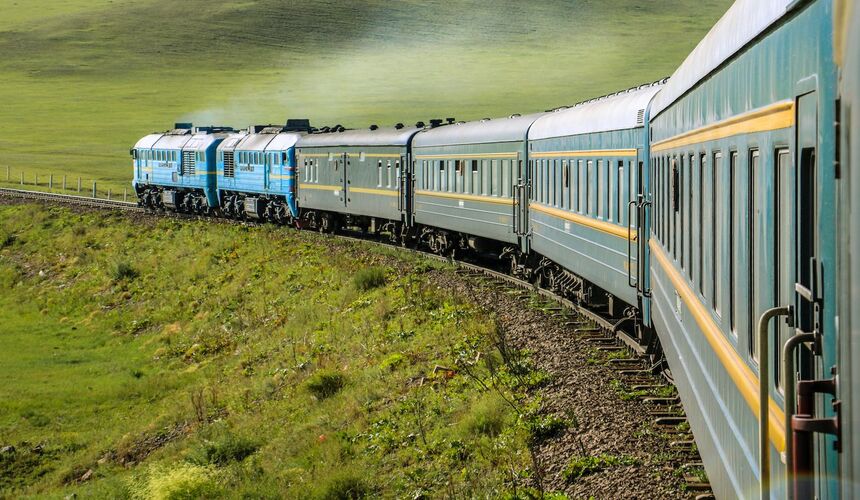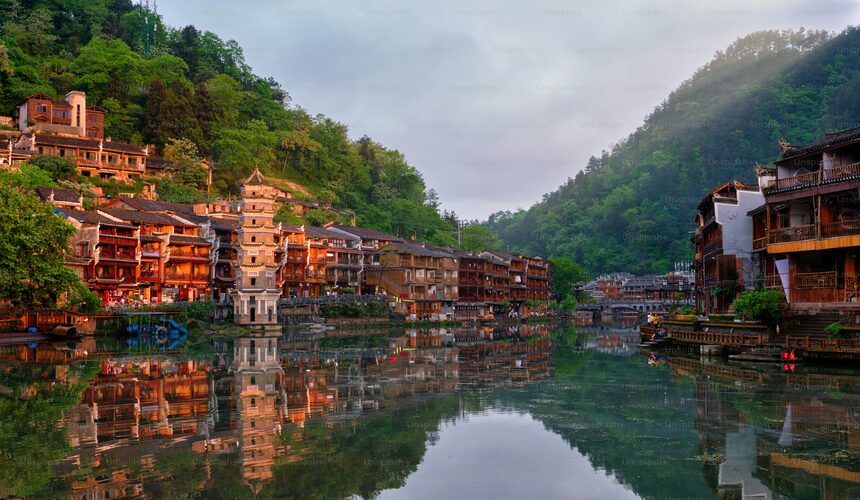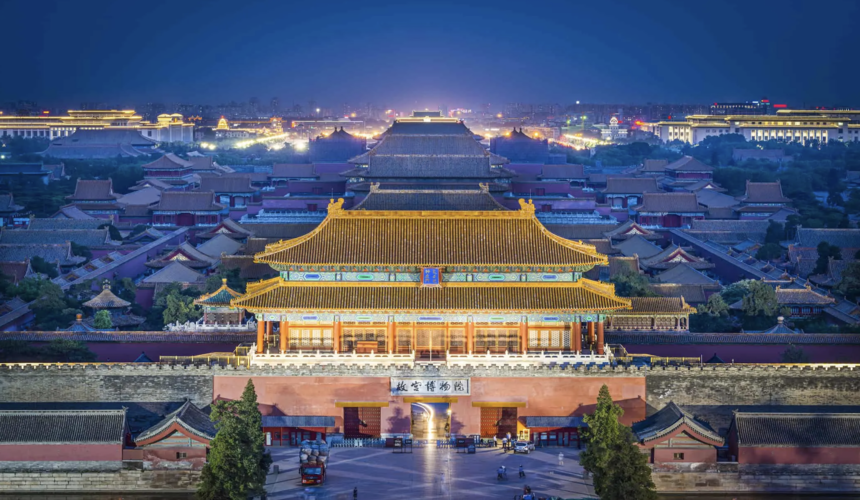
8 Spectacular train journeys in China
China’s vast distances and ever-changing landscapes make it an ideal destination for train travel. From the snow-capped Himalayas and Silk Road oasis towns to the grassy Inner Mongolian steppes and bamboo forests, China’s mass rail network allows you to experience it all. With trains reaching speeds in excess of 300km/h, travel time across the country has been halved, while also providing a more comfortable, reliable, and eco-friendly alternative to flying. Here are some recommendations for the best train journeys in China, showcasing beautiful landscapes, epic World Heritage sites, and more.
Guiyang to Guangzhou
Starting in Guiyang, the train travels southeast through Guangxi’s attractive verdant valleys to reach Guilin and Yangshuo, known for their famous karst limestone peaks. The karst landscape of Guilin is a breathtaking sight, with its sharp, mossy peaks stretching across the horizon. It is so surreal that it was even used as the backdrop for the Wookiee planet Kashyyyk in Star Wars: Revenge of the Sith. On your journey, you will pass through rice fields and the scenic Li River before entering the Cantonese province of Guangdong and arriving at Guangzhou, one of China’s largest and most dynamic cities.

Xian to Urumuqi
The ancient Silk Road has long been associated with romance and adventure for travellers. Starting from Xi’an, the historical starting point of the Silk Road, the train journey takes you through the plains of Shaanxi province and arrives at Lanzhou in Gansu. From here, you will transfer to another bullet train bound for Xinjiang province. During the journey, you will pass through China’s northwest wilderness, admiring the Gobi Desert, grasslands, and snow-capped mountains amidst the rapid development of new cities. Upon arrival at the provincial capital of Ürümqi, you will notice a distinct exotic flavour that feels more Central Asian than mainland Chinese.

Beijing-Kowloon, Hong Kong
Traversing nearly two-thirds of China, this train journey offers an excellent opportunity to experience the country’s stunning landscapes, rich culture, and impressive sights. While the journey begins and ends amidst urban sprawl, there are several scenic highlights to look out for, especially when the train crosses the Yangtze River in locations such as Wuxue and Jiujiang to the south. In Jiujiang, a seven-kilometer bridge spans the river. The entire route boasts 790 bridges and 160 tunnels. Jiangxi is a particularly beautiful region, with wooded hills and highlands visible from the train, especially around Lushan.

Trans-Mongolian
The Trans-Mongolian route is a renowned rail journey that spans 7621km over seven days and six nights. It takes you from Beijing through the Gobi desert, the Mongolian steppe, and the birch forests of Siberia before arriving in Moscow. The Chinese leg of the journey departs from Beijing and passes through the picturesque forested mountains of Hebei and Shandong provinces before reaching the grassy steppes of Inner Mongolia. Upon reaching the Mongolia border, the bogies are changed from the Chinese to Russian line before continuing the journey. An alternative route from Beijing is the Trans-Manchurian (8986km), which takes you through China’s northeast provinces before arriving at Harbin. From there, it passes through Inner Mongolia to reach the Russian border and onwards to Moscow.

Hefei to Fuzhou
Undoubtedly one of China’s most picturesque high-speed railways, this route passes through not one, but three World Heritage sites. Starting in Hefei, Anhui province, this bullet train speeds through China’s southeast to reach Fuzhou in Fujian province. The journey takes four hours and passes through mountainous scenery of misty pine forests, canyons, rivers, tea plantations, and well-preserved villages. Highlights of the region include Huangshan, Sanqingshan National Park, and Mt Wuyi. These locations feature idyllic trails leading to summits with astonishing lookouts.

Nanning to Guilin
This train ride winds through China’s dramatic karst mountains and is considered one of China’s most scenic. Even the Chinese themselves have called Guilin’s scenery ‘the best under heaven.’ The river views, gnarled rocky hills, and verdant paddy fields make for an exceptional introduction to a region that begs for further exploration off the train. An exciting extension to the journey is to continue from Nanning to Kunming (828 kilometers) through Yunnan’s beautiful southern mountain ranges.To make the most of the views, it is recommended to break the journey and take the day trains, although nonstop services are possible.

Beijing to Lhasa
This spectacular two-day trip along the highest railway line in the world is one of China’s most epic train journeys. It covers some 3757km across eight provinces, running from the nation’s capital all the way to Tibet. Departing from Beijing in the evening, you will wake up to the flat rural landscapes of the North China Plain. However, the highlights reel will not start until you reach Qinghai (2275m). During your ascent to the Roof of the World, you will pass through the Tibetan Plateau. The remaining 1110km to Lhasa includes 86% of the line above 4000m. The highest point, Tanggu-la Pass (5072m), offers stunning views of sharp-contoured snowy mountains overlooking grasslands that are home to Tibetan nomads and yaks. For those seeking luxury, the Golden Eagle Shangri-La Express also offers this journey.

Xi’an to Chengdu
This trip connects two of China’s most famous tourist attractions – the Terracotta Warriors and the Panda Reserve – through farmland in Sichuan’s fertile river valleys. Northeast Sichuan is relatively hilly, and the border with Shaanxi features dramatic escarpments. For a great view of the mountainous terrain, visit Jiangyou on the Fu River or Guangyuan, located just south of the Shaanxi border on the Jialing River. The rivers are another highlight of this journey. The train line runs close to the water, taking advantage of the river valleys to cross the rugged terrain. A new high-speed railway between the two cities is set to open in 2015, cutting the distance to 510 kilometers and taking less than three hours. It will traverse the lush Qinling and Daba Mountains.

Do you have any other train routes to recommend? Please feel free to leave your comment below or chat with our travel consultants to create a bespoke itinerary.




